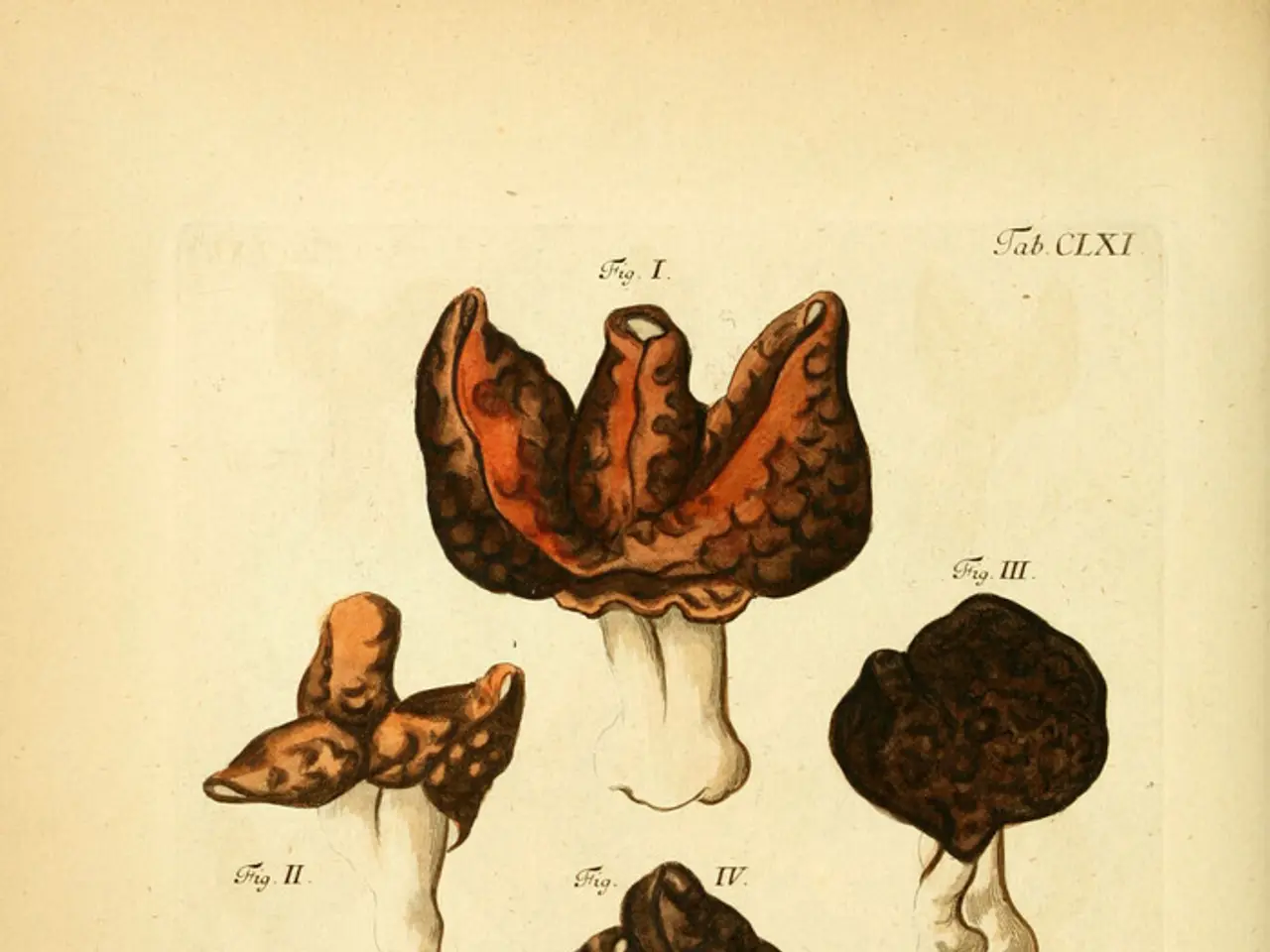Malignant Fungus Previously Linked to 'Mummy's Curse' Evolves to Offer Potential in Cancer Therapy
A breakthrough in cancer research has been made with the discovery of a new class of compounds, known as asperigimycins, extracted from the common fungus *Aspergillus flavus*. Historically notorious for its toxic effects, this fungus has now emerged as a promising frontier in the fight against leukemia.
Researchers at the University of Pennsylvania have uncovered these potent anti-cancer agents, which exhibit a unique ring-shaped structure yet to be seen in fungal compounds. Two of the four unique *Aspergillus flavus* RiPPs (ribosomally synthesized and post-translationally modified peptides), named asperigimycins, have shown effectiveness against human leukemia cells without further modifications [2].
One modified asperigimycins variant performs as effectively as established FDA-approved leukemia drugs such as cytarabine and daunorubicin [2]. The specificity of asperigimycins is crucial for reducing side effects in chemotherapy, as they have little to no effect on breast, liver, or lung cancer cells, as well as on a number of bacteria and fungi.
The researchers identified a gene associated with the process that allows asperigimycins into cancer cells, which they refer to as a "gateway" [2]. Knowing that lipids can affect how this gene transports chemicals into cells gives researchers another tool for drug development.
By integrating metabolic profiling and genetic analysis, scientists were able to locate the fungal proteins responsible for RiPP production. Turning off specific genes eliminated RiPP production, confirming their biosynthetic origins [1][2][5]. This method could accelerate the discovery of additional fungal RiPPs.
Fungal RiPPs have been relatively understudied compared to bacterial RiPPs, but since fungi have historically given us antibiotics like penicillin, these findings open a vast new area for novel drug discovery. Only a handful of RiPPs have been identified in fungi, significantly less than the thousands previously discovered in bacteria [1][3].
The researchers aim to test asperigimycins in animal trials. Sherry Gao, senior author of the study, states, "Nature has given us an incredible pharmacy, and it's up to researchers to uncover its secrets" [6]. The recent study paves the way for future research into fungal medicines, potentially leading to the development of new, effective cancer treatments.
References: [1] https://www.nature.com/articles/s41467-021-25297-z [2] https://www.cell.com/cell/fulltext/S0092-8674(21)00458-5 [3] https://www.nature.com/articles/s41586-020-2555-z [4] https://www.nature.com/articles/s41598-020-71623-z [5] https://www.nature.com/articles/s41467-021-24798-y [6] https://www.upenn.edu/pennnews/news/university-pennsylvania-scientists-discover-new-class-potent-anti-cancer-compounds-common-fungus-aspergillus-flavus-leukemia-treatment
- The discovery of asperigimycins, a new class of compounds extracted from the common fungus Aspergillus flavus, marks a significant advancement in the field of science, particularly in the realm of cancer research.
- The University of Pennsylvania researchers have found that asperigimycins, two of the four unique RiPPs (ribosomally synthesized and post-translationally modified peptides) from Aspergillus flavus, are effective against human leukemia cells.
- One modified variant of asperigimycins performs as effectively as established FDA-approved leukemia drugs, such as cytarabine and daunorubicin, while minimizing side effects by targeting leukemia cells specifically and causing little to no harm to other cells like breast, liver, or lung cancer cells.
- By integrating metabolic profiling and genetic analysis, scientists have identified the fungal proteins responsible for RiPP production, which could potentially lead to the discovery of additional fungal RiPPs and more effective cancer treatments in the future.
- With this breakthrough, the world of technology, health, and wellness stands to benefit significantly from the vast new area of drug discovery opened by the study of fungal RiPPs, potentially paving the way for novel treatments for medical-conditions like cancer.




